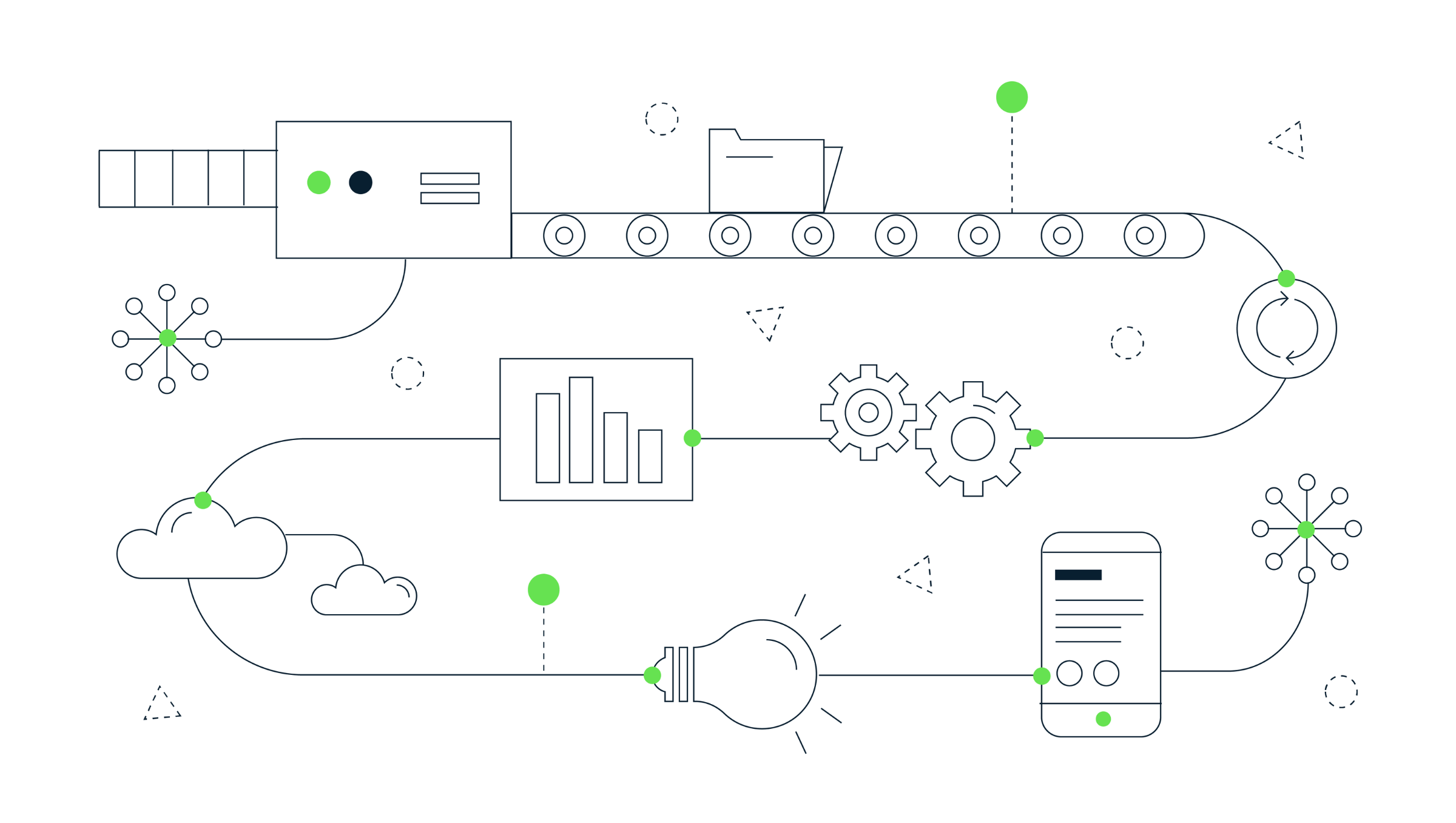Measured Opinions #5: What is a UTM and why is it so important?

This week Dan and Dara discuss Google Analytics’ infamous UTMs. They talk about what they are and why they’re important in having good, reliable and clean data.
Google Analytics documentation on the Campaign Timeout can be found at https://bit.ly/3gyBLr1.
The post Dan mentions around UTM meaning ‘yoU Tell Me’ is https://bit.ly/3iZ1Kcz from Christopher S Penn.
In other news, Dan goes out to the cinema and Dara stays in playing poker!
Leave a rating and review in the places one leaves ratings and reviews, or suggest a new topic by emailing Dan and Dara at hello@measurelab.co.uk.
Transcript
[00:00:17] Dara: Hello, and thanks for joining us in The Measure Pod, a podcast for analytics enthusiasts where we try and make sense of some hot analytics topics and try and have a little bit of fun along the way too. I’m Dara MD at Measurelab, joined as always by Measurelab’s longest serving Analytics Consultant Dan. Hey, Dan.
[00:00:36] Dan: Hey, how’s it going
[00:00:36] Dara: I’m good. Thanks. How are you? What have you been up to in this past week?
[00:00:40] Dan: This last week, I’ve been exploring a new world for a traditional web analyst like myself, and that is digging into the world of app attribution. It sounds probably quite obvious for people in the industry, but for someone like me, all of the skills and all of the knowledge around attribution I’ve got comes from web analytics where you advertise online and someone clicks a link and comes to your website and then they might purchase or do some kind of important action on their website. The app world introduces a step before you even get to the app or install the app, and that is the app stores. So how the hell do you understand if you’re running a bunch of ads and people are clicking through but not installing the app, and then 10 clicks later install the app? it’s just a big unknown for people trying to optimise the ad spend. There’s tools out there that do this, I’m just dipping my toe in the water really? How about you, Dara, what have you been up to?
[00:01:29] Dara: Well I recently finished a remote course run by Hyper Island, a Swedish training company. And it was in leading teams in the digital age. So it was really really good actually, really good course. But I’ve been going back over some of the material just to keep it fresh in my head. And it was really inspirational, I bought a ton of books as well. So I’ve just been going back over that and getting my head back into some reading material.
[00:01:54] Dan: amazing
[00:01:54] Dara: So enough about that. What are we going to talk about this week Dan, what’s our topic?
[00:01:59] Dan: The topic this week is all around UTMs, and ‘What is a UTM and why is it so important?’. This is something that anyone in this space probably fights with on a weekly, if not daily basis with marketers, with their clients, with themselves, with their own companies even, just to do UTM tracking or tagging. And I think we use UTM in sentences and in context, I think almost anyone in this space has heard of UTMs, but I thought it would be really good for us to dig into it a little bit more and just explain why people like us tell other people to keep doing this thing and why.
[00:02:33] Dara: Well, you’re giving me a really easy lead in question. What is a UTM?
[00:02:38] Dan: Well not many people actually know, I suppose it’s not even relevant to know anymore, but before Google Analytics was Google Analytics before Google bought it, it was actually a tool called Urchin. And Urchin created these query string parameters, they created UTMs and it stands for Urchin Tracking Module. And it’s just a way of saying, I know where this session or this click came from in the data. So it’s a way to identify inbound traffic to a website so that you can say, okay, this was a click from Facebook, or this was a click from Google, or this was a click from a display campaign that my agency is running for me. It’s a way to transfer a bit of context into the analytics data of the source of that click.
[00:03:20] Dara: So it’s the same as when people talk about campaign parameters or campaign tracking.
[00:03:24] Dan: Yeah, exactly. And every analytics tool has them. They might not be UTMs, that’s very Google Analytics specific. And to be honest, most analytics platforms now, or most marketing platforms actually use UTMs because they’re such a global standard in this space. Rather than trying to introduce their own version to run alongside, they just use the existing parameters. So it’s just easy to get people to do one thing, get these tools to implement one type of campaign parameter tracking, these UTMs, and just latch onto those.
[00:03:53] Dara: So this might be an obvious question, but why does it matter?
[00:03:56] Dan: I’m going to start by just saying the big buzzword up front and just say attribution.
[00:04:00] Dara: I was waiting for that.
[00:04:01] Dan: I just hear alarm bells going off as I say that, but I’ll explain why. And I explain why attribution, not just attribution modeling, but the concept of attribution is really important. Because as any marketer or any analyst will say, quite often you get asked how well has X done over Y timeframe, and you need attribution to be able to do that. You need attribution to attribute value to something. So what we’re saying is how well has my campaign done over the last month? What we need to understand is how do we associate value to a campaign? And there’s two sides of that. First of all, we need to track the conversion, which Google Analytics and hopefully whoever has done the implementation has got that nailed and sorted. But the other side of that same coin is understanding the campaigns. We need to understand what traffic that was driving to the website, and then what happened on the website? Once we’ve got those two things nailed, we can actually start using that data to say, well, this channel or this campaign, or this media agency you’re working with has generated X amount of conversions, sales, revenue, whatever that important number is you want to be driving up. We kind of go deeper into attribution modeling, but once you’ve got that core data, you can say I’ve had 10 clicks from PPC, I’ve got 10 clicks from SEO, I’ve got 10 clicks from display and then I’ve got a hundred sales. The next question is, well, how do I know what contributed the most? Just because I happen to click my email link and purchase there and then, who’s to say I didn’t click 15 times beforehand with other marketing channels. So the whole concept we’ll probably park for now around attribution modeling to identify what’s important, at what step in the decision-making period. But actually you need to have clean data before you can even think about attribution modeling. What UTMs do is they provide that data the context to be able to do any kind of reporting, attribution modeling, understanding performance metrics, like conversion rates or sales or revenue even.
[00:05:58] Dara: So are these needed for all types of campaign activity Dan?
[00:06:02] Dan: That’s a good question and the answer’s yes, one exception is organic search. Because you can’t tell Google to apply UTM parameters to the search results. So we can do everything but organic search, and this is where we as analytics people or as marketers need to come in and intervene to actively apply these UTM parameters onto every single inbound link to our website and now apps with GA4. Now many ad platforms can do this for you automatically. Most email platforms, paid search platforms, affiliate networks, most of the major ad platforms have a button to go automatically apply UTMs for me. The only time it really becomes a bit manual or labor intensive is with things like social media, or where you’ve set up a direct relationship to refer traffic from one website to the other. And then it’s just a matter of remembering to do something. Sometimes it’s not possible. So if I’m live tweeting an event of course I’m not gonna be able to do that on my phone sitting in an audience somewhere, but in most of the cases you can. And this is the battle where we keep trying to get people to adopt UTMs as a habit, as a way of doing something. A lot of the times when I first I working with a company, one of the first things I check is if they’re using UTMs to track all of their inbound marketing channels, and quite often you’ll find they are for maybe one or two channels, and unfortunately that’s not good enough. When it comes to something like Google Analytics, it’s an analytics tool that tracks everything. It doesn’t just track one or two channels and it can’t just be used to track one or two channels. And this all comes down to a little sneaky feature Google Analytics has that a lot of people don’t realize is there. It’s called the Campaign Timeout.
[00:07:37] Dara: Yeah you’re right Dan, it’s not something that most people consider. So tell us a little bit about the Campaign Timeout and how this relates to UTM tracking and attribution.
[00:07:48] Dan: Yeah, of course. So the Campaign Timeout is a way for Google Analytics to down weight direct traffic. Let me rephrase that artificially down to direct traffic and artificially up weight non-direct traffic. And a lot of the time people might think, okay, but it’s direct. It’s not something that I can affect. I can’t spend money or time or energy or effort or people to increase direct marketing, right. It’s not a marketing channel to improve. So in essence it doesn’t matter. But the issue is that we assume the channel direct means someone’s come directly to the website. Actually direct is the other bucket in Google Analytics. So let’s say I’m running some social media activity, let’s say I’m posting loads on Twitter, but I’m not using UTMs. If people are clicking those links from your tweets that go to your website, more likely than not Google Analytics is not going to understand where that come from. Fundamentally what happens is, when someone clicks that link, they land on your website. And if you’re not using UTMs, there’s no context there to tell Google Analytics that that session started or originated from Twitter. So what Google Analytics does is it says, okay, well, if there’s no UTMs, then it must be direct. So direct becomes this other bucket of all the channels that you’ve not applied UTM parameters for. So going back to this whole point of the Campaign Timeout, Google Analytics goes in and says, well if it’s direct, we don’t care about it. So we’re going to down weight the value there, and we’re going to give it to another channel that you have applied UTM parameters to. So the issue comes in when you’re missing a couple of channels or a couple of campaigns without doing UTMs, Google Analytics will identify that more likely than not. There are times where it will, but for argument’s sake, it will identify that as direct traffic. What you’re basically doing is by tracking some channels and not tracking other channels with UTMs, you’re actually artificially increasing the value of the ones you aren’t tracking by absorbing some of the value from the ones you’re not tracking with UTMs. It it sounds, and is, really complicated and really weird and odd because you kind of go into Google Analytics and it says email 16 sessions, and you think, wow, that must mean that I’ve had 16 clicks on my email. Actually, that’s not the case. Clicks are not sessions, and it’s all because of this Campaign Timeout. I’ll tell you what, I’ll find some documentation and I’ll put it in the show notes because it’s a bigger topic here, than maybe we have time for. This is definitely one of the biggest, oh, I didn’t realize that moments when I run the GA training sessions. So it’s one of those things where people will look in GA and they think, oh, I know what that says, but actually you kind of learn or uncover these things and it’s actually not quite what it says on the tin.
[00:10:26] Dara: So with the Campaign Timeout Dan, obviously you can, I say obviously, I know you can change that within GA. So maybe talk a little bit about that and what effect changing it might actually have. And follow up question. Is it better to focus on consistently and reliably tracking all of your channels?
[00:10:46] Dan: Yeah. So you say that we know, and that’s because we’re in this day-to-day right. And it’s a timeout window that you can change. It’s a configurable window that you can change within the property settings in GA. I never mentioned how long it is, the default is six months. And this is something actually really interesting to talk to people about. Because if anyone listening has ever used Google Analytics, let’s say in March time and they’re still seeing quote-unquote sessions coming through from a Christmas campaign. Or in July, they’re seeing their Valentine’s day campaign come through. You’re seeing traffic appearing in Google Analytics potentially months after the campaign is finished. And in the back of your head, you’re thinking, well how have they still got that link? How have they got that link saved somewhere? Or has it not been switched off? And that’s not exactly what’s happening. What’s happening is someone did click that link. They might have bookmarked the website from there and then they’ve come back every time since then. But Google Analytics, because it’s down weighting the value of direct, it’s overwriting it, it’s removing the direct channel from the reports. It’s replacing it with that previous campaign. So that is a feature that exists. And if that rings true for anyone, then this is what’s happening, it’s the Campaign Timeout skewing all of this stuff. But you can’t change it. So the way Google gets around this, they say, look, it’s a setting that is on by default at six months, but you can remove it. However, in most cases we don’t always advise changing it and that’s not because we don’t think it’s a good thing to change, it’s more around the historical data. So any change you make here is not going to backdate. The Campaign Timeout is a bit of a red herring here because it affects when we don’t use UTMs. So bringing it back to why are UTM so important? It’s because we don’t want that to happen. We don’t want Google to be sneaky and down weight this amazing hard work that a lot of marketers are doing and giving it to one channel that happened to be using UTMs from the beginning. So UTMs are really important to not get sucked into this whirlwind of Campaign Timeouts and direct being down weighted and given arbitrarily to other channels that happened to have UTM parameters. And then of course, we can do the fun stuff like attribution modeling.
[00:12:52] Dara: Okay great, thanks Dan. So to summarize, UTM tracking or campaign tracking is fundamental to GA to get correct and reliable channel reporting, which can then be used for things like attribution modeling. It’s essential that you reliably and consistently track all of your campaign activity with UTMs. Some of it’s made easy, you mentioned organic search is tracked by default and things like Google Ads have auto tagging. So it’s not always a manual process, but for other channels like social, it is very good practice to make sure every link you’re posting out there to the world has these UTM parameters on it. It’s not difficult to do, there is a URL builder tool that Google provide. And I know that we’ve used spreadsheets to manage this as well for clients. But what’s important is making sure that it’s done for every channel so that we avoid these risks of misattribution and the effects that you mentioned around the Campaign Timeout.
[00:13:52] Dan: I read an article recently and I, for the life of me, I can’t remember what it was called. I’ll try and dig it out and put it into the show notes, but they created their own acronym for UTMs. They said it stands for ‘yoU Tell Me’. So speaking on behalf of Google you tell me where it comes from, because I can’t figure it out myself.
[00:14:07] Dara: Nice. So outside of worrying about Campaign Timeouts and UTM tracking consistency, what have you been up to in your downtime Dan?
[00:14:18] Dan: Well, something crazy Dara. I went out for a meal and then the cinema, which in any other time doesn’t sound like such a crazy event, but it’s the first time in well over a year that I’ve done either of those two things. So I had a lovely pizza in Brighton, and then we went to a local cinema to see The Suicide Squad and it was amazing.
[00:14:37] Dara: Yeah. Would you recommend it?
[00:14:38] Dan: I would!
[00:14:39] Dara: Count me in for the pizza, but I’ll pass on Suicide Squad.
[00:14:42] Dan: I reckon you’d like it, give it a go. It’s definitely better than the first one, but I think that’s obvious by now, I think every review says so. Anyway Dara, what’ve you been up to?
[00:14:50] Dara: Uh, so I played poker. Nothing high stakes just with friends. A few drinks, playing for money, but you know, not crazy amounts just to add a little bit of excitement to it. And again, because of the lockdowns, it’s been a while since we’ve been able to do it. So it was really good fun and a good chance to catch up with some friends as well. Okay, I think that’s a wrap for this week. As always, you can find out more about us at measurelab.co.uk or you can email us at a hello@measurelab.co.uk if you’ve got any questions for me or Dan, or even if you’d like to suggest a topic for us to discuss. Otherwise join us next time for more analytics chat, I’ve been dara joined by Dan. So it’s bye for me.
[00:15:31] Dan: And by for me.
[00:15:32] Dara: See you next time
[00:15:49] Dara: Cool, have a nice evening.
[00:15:51] Dan: You too mate, bye-bye.
[00:15:52] Dara: See ya.
[00:15:52] Dan: Bye.
[00:15:53] Dara: Bye-bye.
Daniel Perry-Reed
Subscribe to our newsletter:
Further reading

Easy ways to prepare your BigQuery warehouse for AI

Data pipeline optimisation with Google Cloud and Dataform
